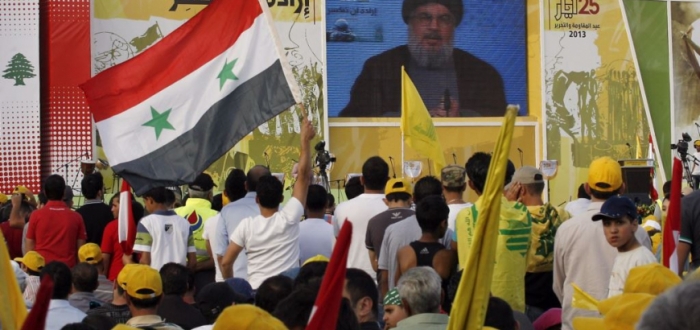Alsouria Net has obtained information from private sources about the spread of liaison offices affiliated with Iranian Shiite clergy and others associated with the Lebanese militia Hezbollah in districts of the city of Homs loyal to the regime.
The mission of these offices, the sources claim, is to spread the ideas and beliefs of the Shiite sect, as well as conscript Syrian supporters for service on Syria’s frontlines.
The sources added that these offices have come to resemble a “state within a state” after nearly five years of armed rebellion and the domination of arms over decision-making, transport lines and finance in these districts. In many cases, they have begun to spread their ideology, compel residents to adopt it, and fight those who oppose them.
Maram, a girl from the Bab Sabaa district in Homs city, says she moved at the start of the uprising in Homs to live with her family in the Jaramana district in Damascus. Her father, Hassan, had dealings with regime officers and security officials and worked to use these relationships to return to the Wadi al-Dahab district in Homs, which is loyal to the regime, as an officer in one of the pro-regime National Defense Forces (NDF) militias.
Maram added that in the beginning, the NDF were moving throughout most towns and neighborhoods of Homs to quash the demonstrations or join military campaigns, and then her father and his groups settled at the checkpoints that spread within and around the Wadi al-Dahab district
Maram continued: “After Hezbollah and Iran entered the war in Syria, my father started to move out of armed action and fighting into other activities, like printing religious texts to encourage the Shiite sect, and holding parties and forums, as well as gatherings for young men enthusiastic about ideas of jihad and fighting, and bringing them to clubs and closed camps. These had other aims: the role of these young men was to work on raising the banner of Hussein and restoring the glories of the Shiite sect in the region.”
The sources added that these young men, and those in charge of them – mostly Shiite sheikhs from Iraq, Lebanon and Iran and some Syrians – quickly became entities with special structures, armed wings and followers to spread their ideology, in addition to prisons that punished those who dissented or fought against the direction in which they were headed. In many instances they held the perpetrator to account in other civil cases.
It has been indicated that similar work began in the northern Aleppo provinces to spread Shiism among residents of the countryside.
Al-Souria Net’s correspondent in Aleppo previously reported that after Iraqi Shiite militias took control of villages in the southern Aleppo countryside they began to take advantage of the living conditions in the area – considered one of the poorest parts of the province with high rates of illiteracy among its residents – to spread ideas and teachings that fit the goals of these militias.
Our correspondent added that after taking control of the Abteen village, close to Jebel Azan in the southern Aleppo countryside, the Iraqi Harakat al-Nujaba Movement transformed the mosque to a center for spreading Shiism and sectarian ideology among the residents and civilians who had been recruited to fight alongside them.
They held daily religious forums with the participation of Iraqi clerics, whom the movement called in to encourage the residents to adopt Shiite ideology and spread their ideas, as well as to volunteer as fighters working under their command with a view to breaking the siege imposed by the opposition forces on the Shiite cities and villages in Idleb and Aleppo.
This article was translated and edited by The Syrian Observer. Responsibility for the information and views set out in this article lies entirely with the author.


